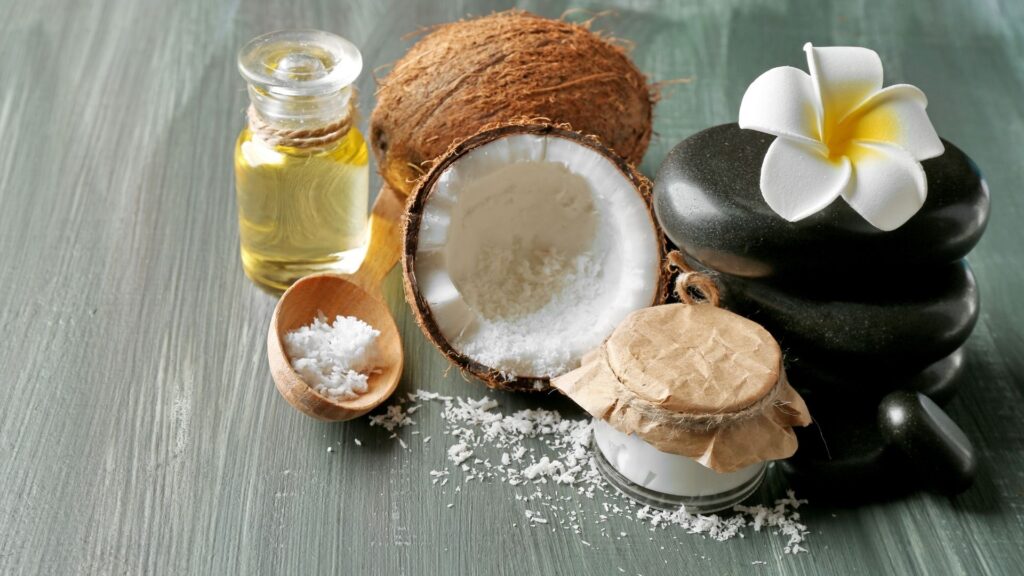
Goodness from the “Tree of Life” – Final Part
Is the coconut some fruit? Or is it a nut? The fact that coconuts can be both nuts and fruits further confuse some. The exocarp is a firm, green layer on the outside of a coconut. The mesocarp, which resembles a brown, hairy husk, follows. The endocarp is a seed’s protective covering that is found inside. When you crack open a coconut, both the “white color meat” and the liquid are contained within the covering.
The versatile coconut has a wide range of nutritional benefits. Earlier, experts at Sirwiss shared their thoughts on coconut water’s health benefits. The white mesh left over after coconut water is extracted has several applications, some of which are discussed in this article.
What Is Coconut Meat, and What Are the Benefits?
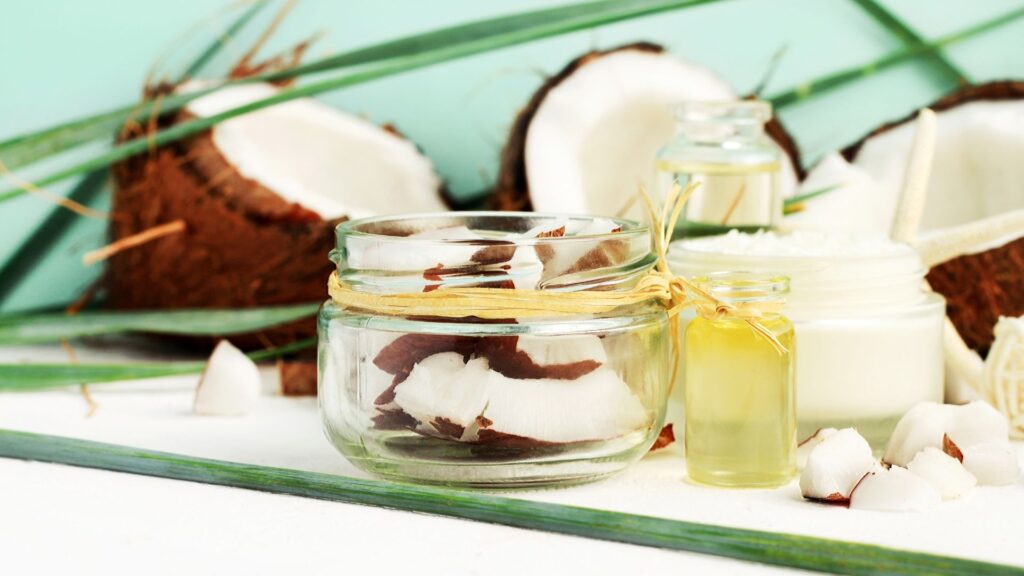
The white flesh inside a coconut is known as coconut meat. Coconuts are the enormous seeds produced by tropical coconut palms (Cocos nucifera). Their brown, fibrous husks hide the meat within. As the oil and milk derived from this fruit have grown in popularity, many people may be wondering how to use coconut flesh and whether it has any health benefits. This article will teach you all there is to know about coconut meat.
Nutrition Facts
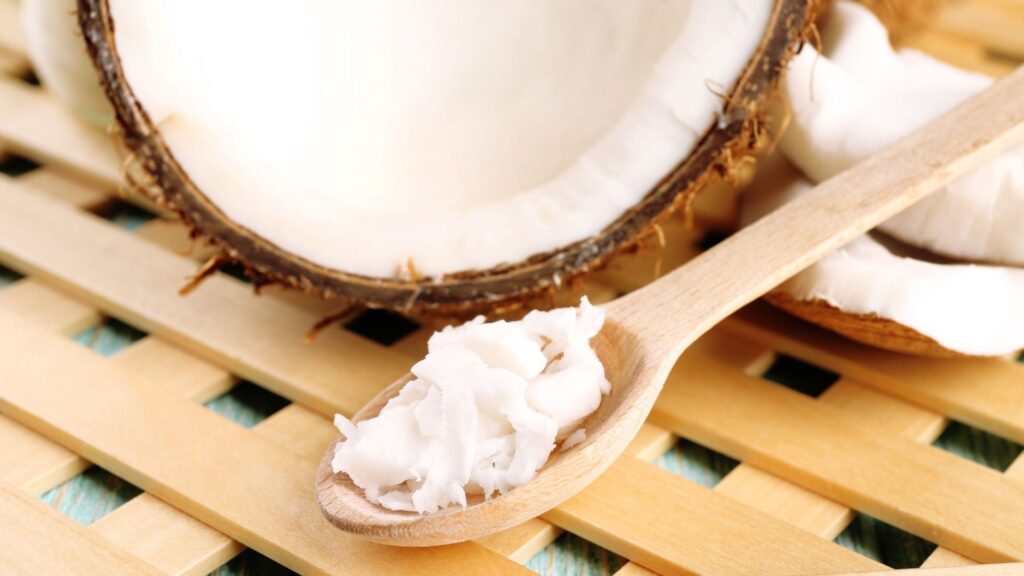
Coconut meat is high in fat and calories while moderate in carbs and protein. The nutrition facts for 1 cup (80 grams) of fresh, shredded coconut meat are
- Calories: 283
- Protein: 3 grams
- Carbs: 10 grams
- Fat: 27 grams
- Sugar: 5 grams
- Fiber: 7 grams
- Manganese: 60% of the Daily Value (DV)
- Selenium: 15% of the DV
- Copper: 44% of the DV
- Phosphorus: 13% of the DV
- Potassium: 6% of the DV
- Iron: 11% of the DV
- Zinc: 10% of the D
Coconut meat is high in minerals, particularly manganese and copper. Copper helps bone development and heart health while manganese helps enzyme activity and fat metabolism.
Fat
Because of its high fat content, coconut is a one-of-a-kind fruit. Its meat contains approximately 89% saturated fat. The majority of these fats are medium-chain triglycerides (MCTs), which are absorbed intact in your small intestine and utilised to make energy by your body.
Fiber
One cup (80 grams) of shredded coconut has 7 grams of fiber, which is more than 20% of the daily value. The majority of this fiber is insoluble, which means that it is not digested. Instead, it helps to transport food through your digestive system and improves gut health.
Health Benefits of Coconut Meat
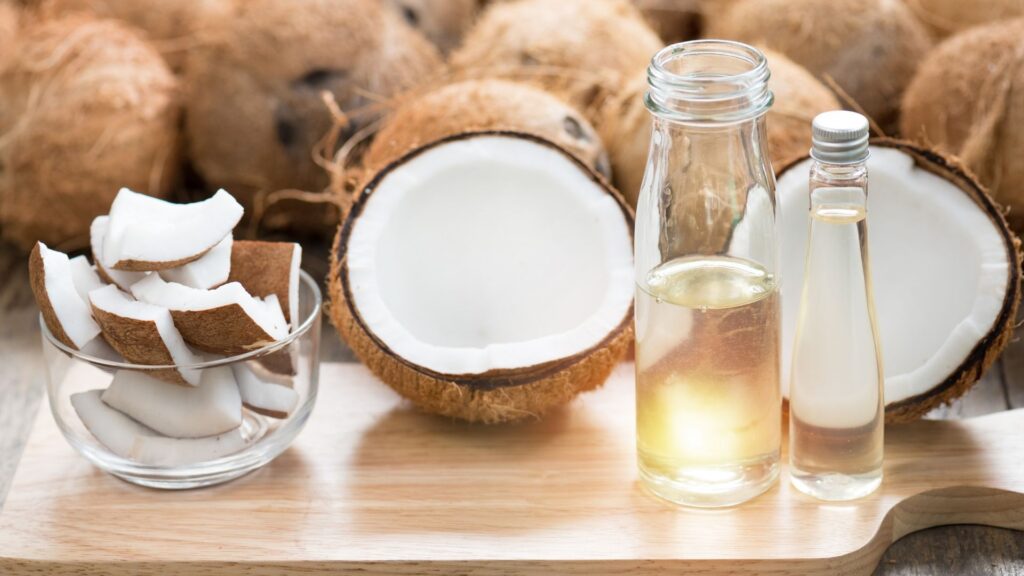
Coconut flesh may be beneficial to your health in a variety of ways. The fat content of this tropical fruit has been the subject of much research into its health benefits.
May Boost Heart Health
Coconut oil, found in coconut meat, has been shown to improve HDL (good) cholesterol while decreasing LDL (bad) cholesterol. Your risk of heart disease may go down if you improve these markers. Researchers gave 91 participants daily doses of 1.6 ounces (50 ml) of extra virgin coconut oil, extra virgin olive oil, or unsalted butter for four weeks. The HDL (good) cholesterol levels of those given coconut oil were significantly higher than those of those given butter or olive oil.
Another study involving 35 healthy adults found the same thing: taking 1 tablespoon (15 ml) of coconut oil twice a day significantly increased HDL cholesterol compared to the control group. This trial lasted for 8 weeks. Another 8-week trial found that compared to those who ate soymilk porridge, those who had 7 ounces (200 grams) of coconut milk porridge saw significant reductions in LDL (bad) cholesterol and increases in HDL (good) cholesterol.
May Support Weight Loss
The meat from the coconut might help you cut calories. The medium-chain triglycerides (MCTs) in this fruit have been linked to increased satiety, increased energy expenditure, and fat oxidation, all of which may facilitate weight loss. Furthermore, the high fiber content of coconut flesh might increase satiety, which may aid in controlling food intake.
A 90-day trial in 8 persons found that adding 1.3 cups (100 grams) of fresh coconut to a regular diet resulted in significantly more weight loss than adding the same quantity of peanuts or peanut oi. However, the amounts of coconut and MCT oil used in these trials are quite high, thus it is not known if eating a reduced amount of coconut meat will have the same effects.
May Aid Digestive Health
Due to their high fiber content, coconuts contribute to regular bowel movements and a healthy digestive system. Fat-soluble vitamins A, D, E, and K are more easily absorbed by the body when consumed alongside these fruits. Furthermore, the medium-chain triglycerides (MCTs) in coconut meat have been proven to boost gut bacteria, which may provide protection against inflammation and illnesses like metabolic syndrome. Plus, some research suggests that coconut oil helps inhibit the expansion of infection-causing yeasts like Candida albicans.
Other Benefits
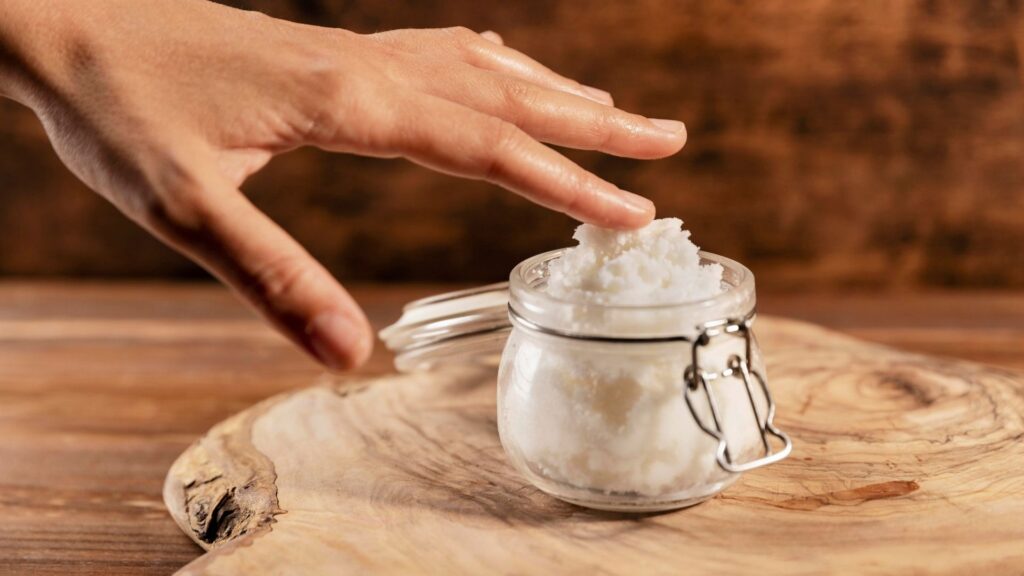
Eating coconut meat may have other benefits, including the following:
- May stabilize blood sugar. Fasting blood sugar levels and intestinal microbes may both be influenced by this fruit.
- May improve immunity. Coconut may improve immunity and reduce inflammation due to the presence of manganese and antioxidants. The MCTs in this fruit may also fight viruses and fungi, and they may even prevent tumor growth.
- May benefit your brain. People with memory or brain function impairments, such as those with Alzheimer’s disease, may benefit from using coconut oil because of the MCTs it contains as an alternative fuel source to glucose.
How to Use Coconut Meat
You can get coconut meat in many different forms, such as frozen, shredded, or dried. Whole coconuts can be bought in some stores. In order to shatter the husk, you must first penetrate its soft places, or eyes, with a hammer and nail in order to drain the milk. Take out the meat with a spoon if it’s soft or cut it out with a knife if it’s not.
Some ways to use coconut meat include:
- Shredding it to add to fruit salad, mixed greens, yogurt, or oatmeal
- Blending it into smoothies, dips, and sauces
- Combining it with breadcrumbs to coat meat, fish, poultry, or tofu before baking
- Drying it to add to homemade trail mix
- Stirring fresh chunks of coconut into stir-fries, stews, or cooked grains
Coconut Water vs. Coconut Milk
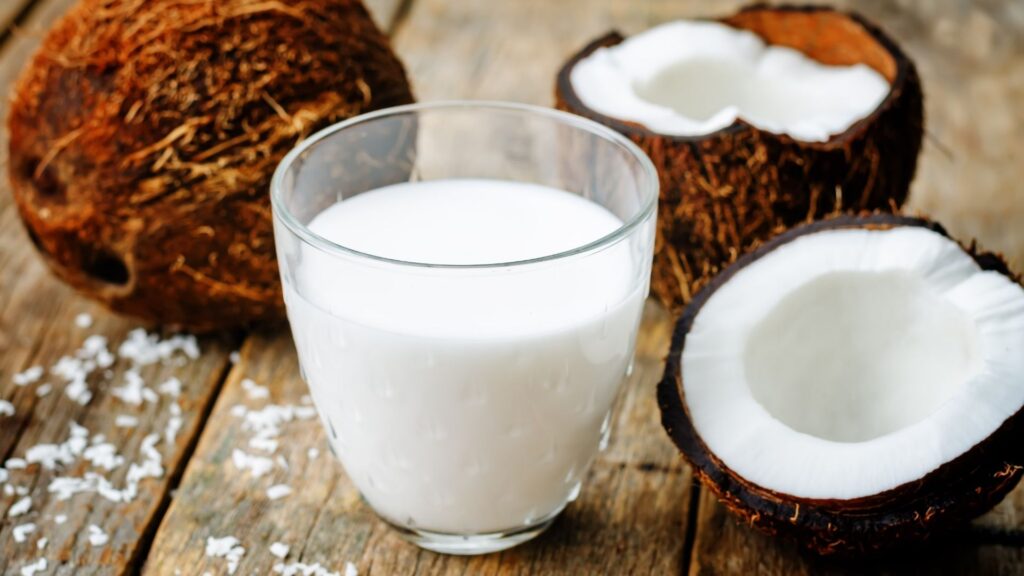
The coconut has a 38% hard outer shell, 10% liquid, and 52% coconut meat. The endosperm tissue of a coconut is where you’ll find the fruit’s edible water and milk. But they’re not the same thing at all; they’re both made from coconuts.
Coconut Water
Young green coconuts are the only source of the delicious, clear liquid known as coconut water. The liquid endosperm is a naturally occurring substance found within fruits. Once immature coconuts begin to grow, the coconut water begins to harden into the solid endosperm that makes up the coconut meat. Even fully ripe coconuts may still contain some coconut water since the maturation process doesn’t fill the entire cavity with the meat. Coconut water’s pleasant flavor and high mineral content have made it a fan favorite.
Coconut Milk
Coconut milk, in contrast to water, is a byproduct of the processing of coconuts. Grated mature white flesh of coconuts is simmered in hot water until it becomes a thick paste. Any remaining solids in the mixture are filtered out. Milk can be thin or thick depending on how much water was used to make it. Coconut milk, especially the thinner variety, is commonly used as a dairy-free alternative to whole milk. In contrast, in many Indian and Southeast Asian dishes, coconut milk is utilized to thicken sauces or traditional recipes.
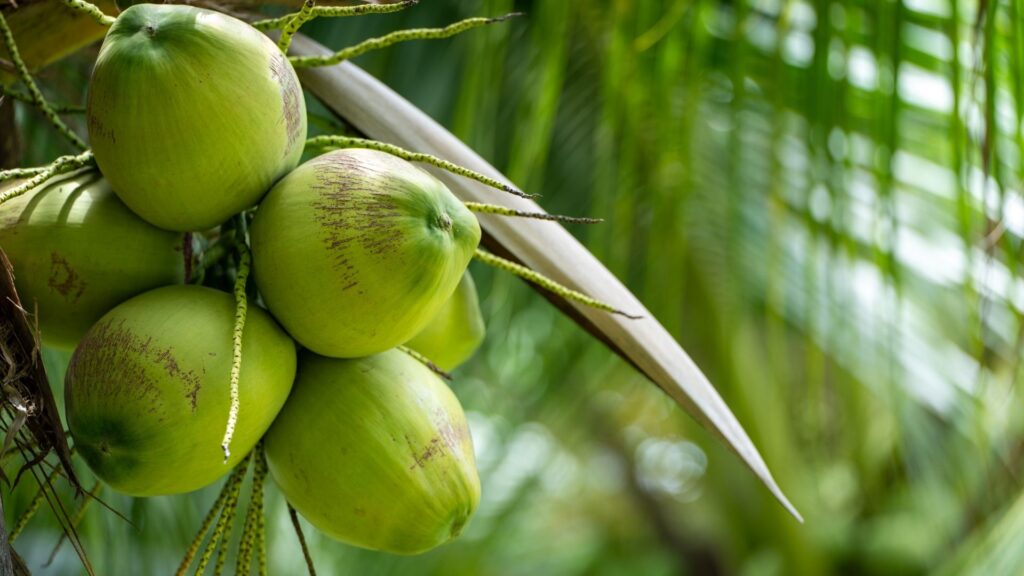
White coconut flesh can be eaten both fresh and dried. It may help with heart health, weight loss, and digestion because of its high fiber and medium-chain triglyceride content. You should eat it in moderation because of its high calories and saturated fat content. Generally speaking, unsweetened coconut flesh is a fantastic addition to any healthy eating plan.